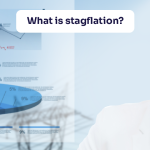Would you send a marathon record holder to compete with Usain Bolt in the 100-meter dash?
Absurd, right? He’s a runner. But it’s not the kind of race he trains for.
That’s exactly what you are doing when you expect your SIP (which actually delivers best results over the long term) to deliver short term returns!
Systematic Investment Plan (SIP) has become one of the most preferred routes for investing in equity funds by many. Beyond the convenience of investing, investors seem to appreciate its other benefits, like the low minimum investment, the investing discipline it inculcates, rupee cost averaging and power of compounding it delivers and the lack of need to time the market, among others.
As per AMFI data, at Rs. 8,122crs per month, the SIP collections have seen a 7.5% y-o-y growth in June 2019, which signifies that more and more investors are turning to SIPs as a mode of investment.
But sometimes, in the rush to reap gains, investors tend to ignore a simple truth: the longer one invests, the more beneficial SIPs will be for an investor. Here’s why…
When an investor invests for 20 years, the average holding period for each SIP is just 10 years. This is because, at the end of 20 years, only the first SIP installment has completed 20 years, whereas the last SIP installment may not have even completed 1 month. Hence even though he or she has been investing since 20 years, the average holding period is just 10 years. Thus, investors should consider the average holding period and not the start date of their investment to determine the holding tenure.
One of the advantages of investing through SIPs is the benefit of the power of compounding. To understand why investing for a longer-term is more rewarding, let us consider a SIP investment of Rs. 10,000 per month for different time periods.
Now it’s clear from the above table that the amount of additional investment is Rs. 3.6 lacs every 3 years. Yet for the same amount of additional investment, the incremental value increases at a much faster rate as the time period increases. After 15 years, the incremental value has increased by 3.86 times over the additional investment (Rs. 13.9 lacs/Rs. 3.6 lacs), whereas it is only 1.58 times in 6 years. This factor is often neglected as a human mind is attuned to do Arithmetic Progression and not Geometric Progression.
Even as investors continue to invest through SIPs, a big concern which remains is that many investors stop their SIPs prematurely and many of them withdraw the funds before the tenure runs out. It is generally seen that investors commit to continue SIPs for long durations of 7-10 years but they end up discontinuing the SIPs mid-way, after 3-4 years. Some of the leading reasons are…
Generally, most investors are told to expect returns over 10-15 years to be around 12-15% pa. However, these returns are not linear (i.e., we cannot assume that we will receive positive returns year after year, as we can in the case of a fixed deposit) SIP in equity funds are affected by market movements. Thus the gains of the investors move up and down with the direction of the market. The returns from equity funds will never be in a straight line if we consider calendar year NIFTY 50 returns for the last 20 years, the maximum return that an investor has earned in any calendar year is 71.5% (2009) and the minimum return is -51.8% (2008). Thus the returns would be constantly getting averaged out and could be high or low depending on market movements. To compare these returns with fixed income would be one of the biggest mistakes made by any investor.
Mutual funds are transparent with respect to where an investor’s money is invested. The NAV of funds is available on a daily basis and the portfolio of funds is available on a monthly basis. This is beneficial as investors get to know where exactly their money is being invested. On the other hand, this also acts as a drawback as any negative news about a certain company creates nervousness among the investors and many a time also leads to panic selling by investors. Many other investment vehicles, like NPS and ULIPS of Insurance companies, may also hold these securities but the details of the same are not publicly available. In the case of mutual funds, ease of redemption is another factor which acts as a drawback. Since investors can easily redeem their investments, investors look to redeem them even if there is a small deviation in returns from their expectation.
Another reason why many investors decide to discontinue their SIPs is dissatisfaction with the returns of the fund. Investors start SIP and within a short period of 1-2 years, they start evaluating the returns that they have earned. At this point, many investors feel that they have made wrong investment decisions, not realizing that for a 2-year SIP, the average holding period is only 1 year. They start comparing with other stocks or even the NIFTY and Sensex. This is a complete apple and oranges comparison but since their immediate experience is not good, most investors are in no mood to listen. Some investors shy away from mutual funds, thinking that they will not get good returns from their investment while others take hasty decisions and exit from their investments. If investors exit from their investments in the short term, they miss out on the gains which they can earn in the later years.
As per our internal research of equity funds (growth option) having inception of more than 20 years (inception date before July-1999), the average value of all funds with SIP of Rs. 10,000 per month is as per the table below –
As we can see from the table above, if the investors continued to invest for 20 years, their investment has multiplied by more than 12.5 times for the best to 2.5 times for the worst.
It is generally observed that as the tenure of SIP increases, the probability of negative returns reduces and also the volatility in returns is reduced. To understand this better, we have considered the example of Kotak Multi-Cap Fund which is a Multi cap fund with the largest AUM as on June-19 and has been in existence for more than 7 years.
From the above table we can see that when the investment tenure is 1 year, the probability of negative returns is high whereas the same reduces as the tenure increases to 2 years and there are no negative returns if the investment tenure is 3 years or more. The moment the SIP period crosses 5 years there is a marked improvement in the returns.
Coming back to our runner analogy, endurance is the most important attribute of a marathon runner. So, if you commit to a SIP, you’d better develop endurance…
Warren Buffett first started investing at the age of 11 but he became a billionaire only when he reached the age of 56. You may not have to wait that long to get there, but there’s no escaping a wait. Remember, good things come to those who wait!
You may also like: Step up your SIPs to stay ahead
Disclaimer:
We, Ventura Securities Ltd, (SEBI Registration Number INH000001634) its Analysts & Associates with regard to blog article hereby solemnly declare & disclose that:
We do not have any financial interest of any nature in the company. We do not individually or collectively hold 1% or more of the securities of the company. We do not have any other material conflict of interest in the company. We do not act as a market maker in securities of the company. We do not have any directorships or other material relationships with the company. We do not have any personal interests in the securities of the company. We do not have any past significant relationships with the company such as Investment Banking or other advisory assignments or intermediary relationships. We are not responsible for the risk associated with the investment/disinvestment decision made on the basis of this blog article.

In Conversation with Dharmendra Satapathy
4 min Read Apr 20, 2021
2 Minute SIP Challenge Liya Kya?
2 min Read Sep 7, 2020
Should you discontinue your SIPs?
4 min Read May 18, 2020
Use SIPs in equity Mutual Funds to lighten the burden of a housing loan
3 min Read Dec 13, 2019
Blue-chips and Large-caps are the equivalent of Gold in the Stock market
3 min Read Nov 5, 2019
Revisiting the Gold-Silver Ratio Amid Silver's Outperformance
6 min Read Dec 22, 2025
Midcaps: Sweet Spot or Danger Zone? | What HSBC MF’s Cheenu Gupta Thinks | Ventura Spotlight
6 min Read Dec 17, 2025
Understanding Option Pin risk near expiry
6 min Read Dec 12, 2025
EPS in the Stock Market
6 min Read Dec 12, 2025
What is stagflation?
6 min Read Dec 10, 2025
Post your comment
You must be logged in to post a comment.